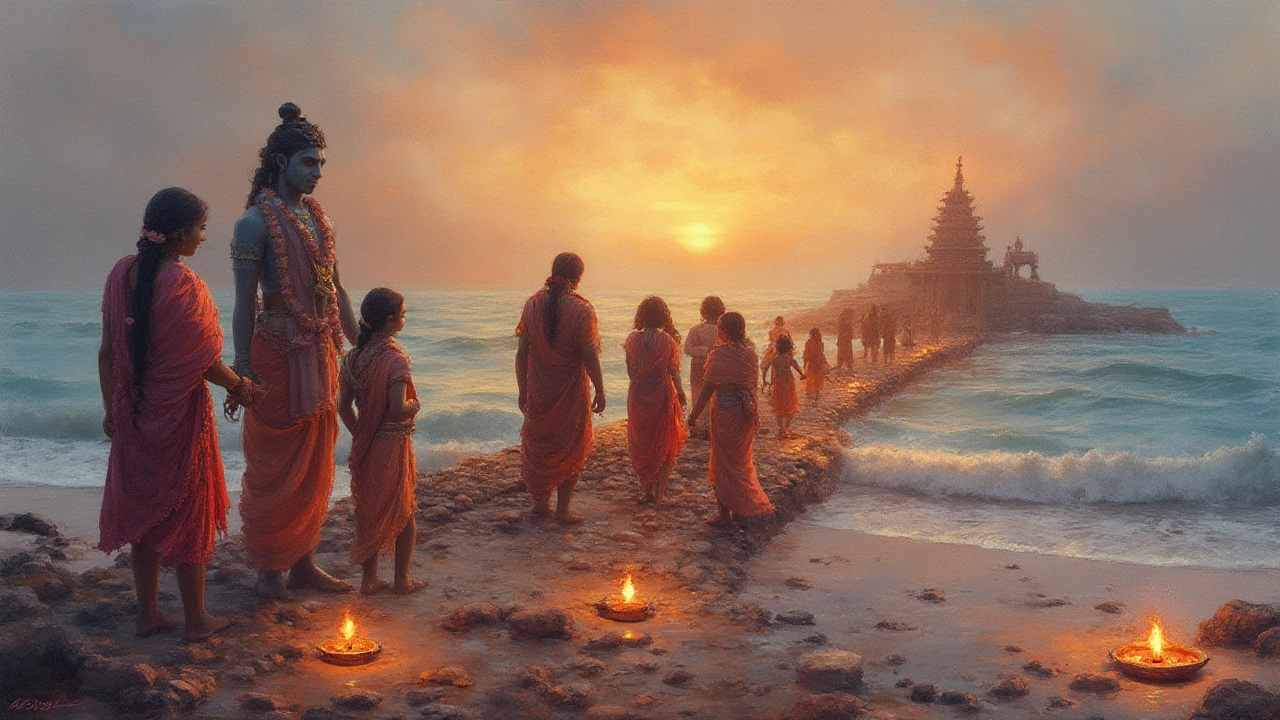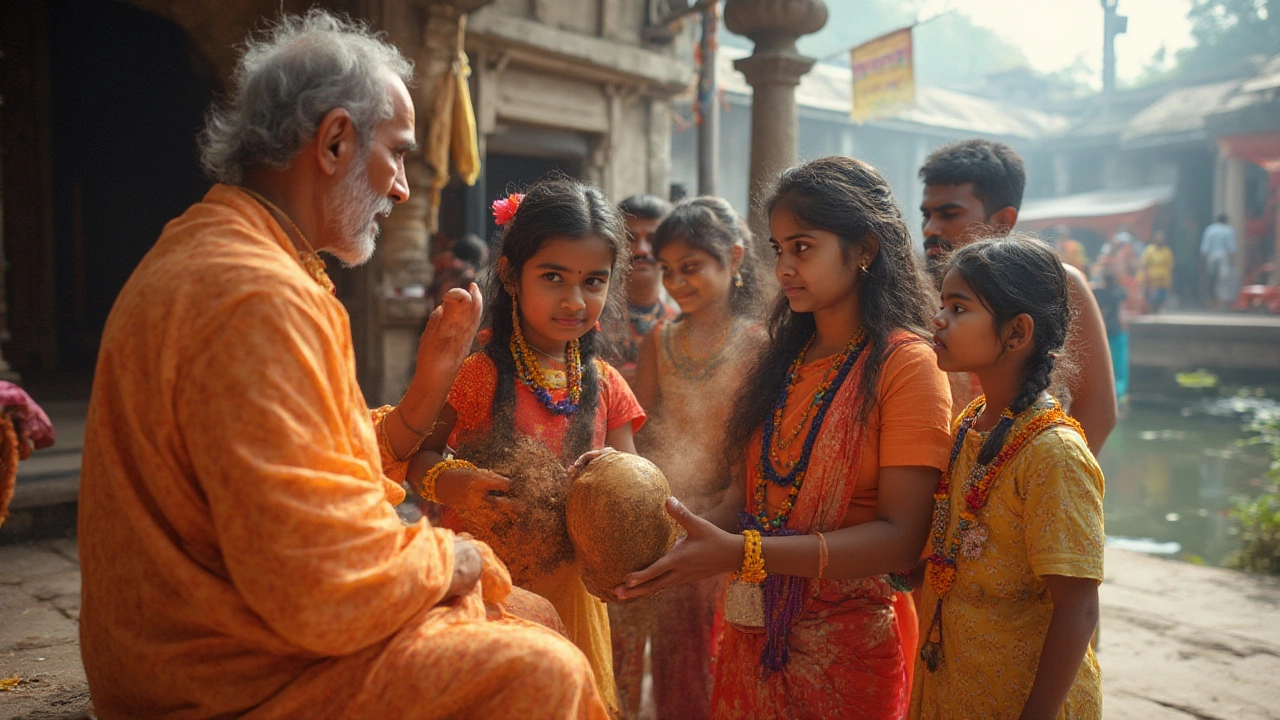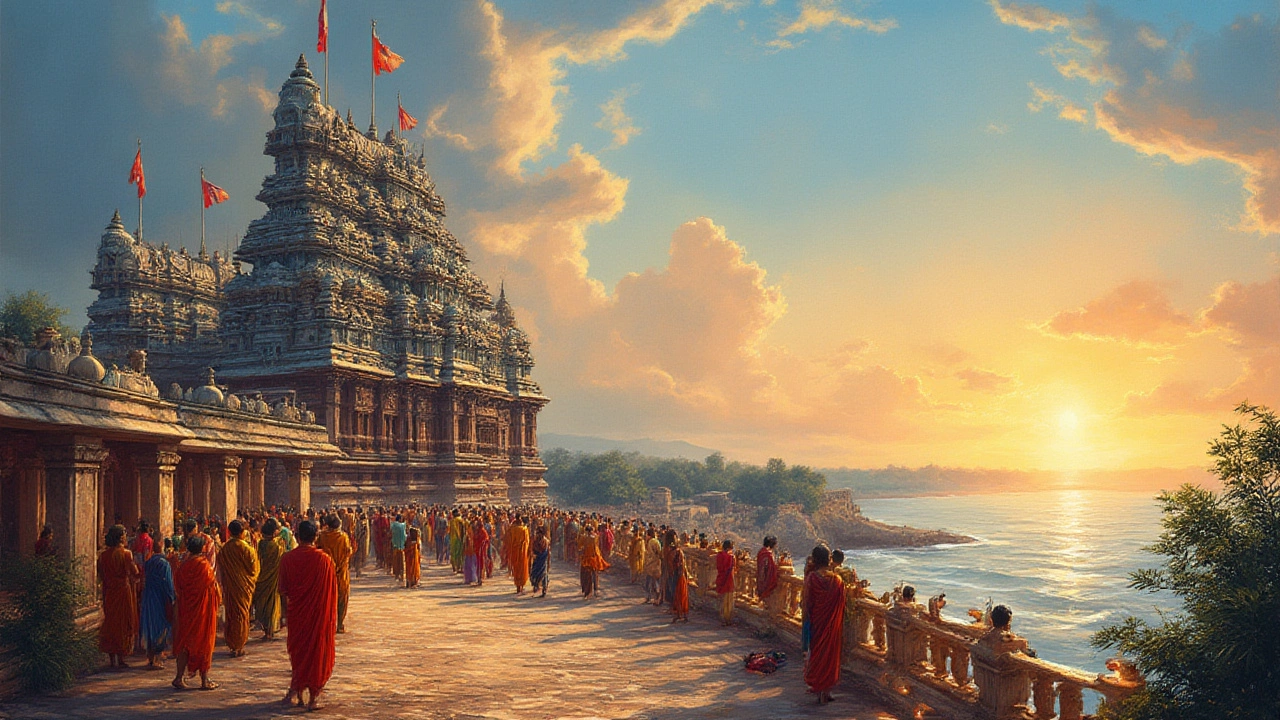You ever hear about places that just pull people for centuries, no matter how far or difficult the trip? Rameshwaram is that place for a lot of people. Temples, myths, rituals—it's a hotpot of spiritual energy, all rolled into one small town on an island in Tamil Nadu. Yet, plenty of folks—even regular visitors—aren’t sure what exactly makes Rameshwaram special. Is it a dham? Is it a jyotirlinga? Why does everyone from backpackers to grandma’s friends keep talking about it?
Understanding the Concepts: What Is a Dham? What’s a Jyotirlinga?
Let’s cut through the confusion. In Hindu tradition, ‘dham’ usually means a place so holy, it’s said that visiting washes away lifetimes of bad vibes. There are four main ones—the Char Dham—scattered across India: Badrinath, Dwarka, Puri, and Rameshwaram. Each has its own deity, legend, and epic scenery. The idea? Touch these four spiritual corners, and you’ve more or less covered every cosmic base possible.
Now, the ‘jyotirlinga’ is a whole different, but equally remarkable, thing. Jyotirlingas are twelve specific shrines spread out in India, all linked to Lord Shiva. These are said to be places where Shiva appeared as a fiery column of light—so blinding you couldn’t see the top or bottom, only a mystical shaft of power. People don’t just visit, they come crawling, weeping, chanting—hoping to feel even an echo of that ancient energy.
So, before we get tangled up, note this: d hams and jyotirlingas have different origin stories and spiritual focuses. A dham covers a broader palette—sometimes devoted to Vishnu (like Puri, Badrinath, Dwarka), sometimes to Shiva (that’s Rameshwaram’s gig). Jyotirlingas, on the other hand, are all about Shiva—and only Shiva—as mythic, formless cosmic light. Not every dham is a jyotirlinga, and not every jyotirlinga is a dham.
What makes Rameshwaram stand out is it’s one of the very few places that check both boxes. Yup, you read that right. People sometimes assume you’re only supposed to pick one title. But who says a spot can’t double up?
This rare dual honour is why family elders nudge pilgrims to put Rameshwaram high on their spiritual bucket lists. If you want a place that covers it all—nostalgia, mystery, more mythology than Netflix can handle—Rameshwaram delivers.
The Unique Story of Rameshwaram: Legends, Myths, and Rituals
Okay, let’s get into what makes Rameshwaram tick. According to the Ramayana, Lord Rama landed here with his army after rescuing Sita from Ravana. Before heading back to Ayodhya, Rama stops at Rameshwaram to worship Shiva. Why? He wanted to wash away the sin of killing Ravana, who—even though a villain—was a Brahmin.
Here’s where things get really interesting. Rama—or in some versions, Sita—fashions a lingam (Shivaling) out of sand for worship. That’s known as the Ramalingam. Later, Hanuman brings another lingam from the Himalayas—the Vishwalingam—because Rama had instructed him to fetch one. Today, you’ll find both these lingams inside the Ramanathaswamy Temple. Priests worship the Vishwalingam first, as ordered by Rama himself. Ever seen sibling rivalry between two lingams? Only in Rameshwaram do you get to watch this drama play out in daily ritual.
The temple itself is a jaw-dropper—massive corridors, seemingly endless stone pillars (there are 1,212 of them), and intricate ceilings, all built between the 12th and 18th centuries by various royal dynasties. Pilgrims take a holy dip in 22 wells inside the temple—each one said to have different medicinal properties, and no, nobody can explain why the water in each feels different. You can spot teenagers shivering after bath number 8, aunties bargaining for dry towels, and priests reciting ancient mantras while flicking droplets at everyone nearby. It’s a whole scene.
Ready for an extra layer? Local folklore claims that offering prayers at Rameshwaram can give salvation even to your ancestors. That’s why lots of people undertake ‘pitru dosha’ poojas—rituals to appease past generations. People travel with photos of loved ones, conduct offerings on the seashore, and walk away lighter, emotionally and spiritually.
Here’s something quirky: legend has it, if you skip Rameshwaram during your Char Dham trip, the pilgrimage is incomplete. So even sharp-tongued uncles notorious for skipping family functions would rather not miss this one.

How Rameshwaram Fits: Sacred Geography and Its Place Among Dham and Jyotirlinga
Geographically, Rameshwaram is a knockout. It sits on Pamban Island—so close to Sri Lanka, you can almost sense the call of a distant shore. That proximity feeds right into the legend of the Rama Setu (Adam’s Bridge), the mythical causeway Rama’s army built to reach Lanka. NASA satellite photos have shown chain-like formations under the sea connecting India to Sri Lanka, which conspiracy theorists and believers alike point to and nod knowingly.
But back to its spiritual rankings: Rameshwaram is officially one of the Char Dhams, as mentioned by Adi Shankaracharya in the 8th century. Most dham circuits start in Badrinath (north), moving to Puri (east), then Dwarka (west), and ending at Rameshwaram (south)—a full sweep covering every possible element and direction.
But what about the jyotirlinga tag? That’s certified too. The Ramanathaswamy Temple is recognized as one of the 12 jyotirlingas by every classic Sanskrit text you’ll find, from the Shiva Purana to the Linga Purana. In fact, if you line up all twelve, this is the only one found on an island, surrounded by the sea instead of Himalayan forests or rocky outcrops.
Now combine these two identities: if you’re planning on hitting all Char Dhams and all jyotirlingas, congratulations—you get a two-for-one at Rameshwaram. You can check both quests off your list in this ancient, bustling temple town.
To drive the point home, here’s a simple table that breaks down key differences and the unique status of Rameshwaram:
| Feature | Dham | Jyotirlinga | Rameshwaram |
|---|---|---|---|
| Associated Deity | Vishnu or Shiva | Shiva | Shiva (Worshipped by Rama) |
| Number in India | 4 (Char Dham) | 12 | 1 (Common to both) |
| Key Ritual | Pilgrimage circuit | Abhisheka to lingam | Ritual bathing, dual lingam worship |
| Geography | Varied | Varied (hills, forests, cities) | Island, next to the sea |
| Historical Origin | 8th-century texts; Adi Shankaracharya | Puranas | Ramayana, Shiva Purana, Adi Shankaracharya |
That dual status is why Rameshwaram is virtually unmatched in legend and ritual. You’ll find crowds from all walks of life—families with sobbing toddlers, lone ascetics, teenagers on a post-exam road trip—all crammed into one sacred zone.
Practical Tips for Visiting: Making the Most of Your Rameshwaram Experience
Planning a visit can feel daunting, especially with the endless ‘should-do’ lists everyone throws around. Here’s the real deal on making your trip to Rameshwaram smooth and meaningful, even if you don’t know Sanskrit from spaghetti.
- Rameshwaram can get swelteringly hot, so morning rituals and temple tours after sunrise are your best bet—nobody enjoys standing barefoot on 50°C stone tiles.
- If you want that holy-dip-in-22-wells experience, pack extra clothes. You’ll absolutely get soaked, no matter how careful you are—or how many umbrellas you bring.
- For the spiritual explorer, find a good guide or talk to the head priests. They’ll share stories and old-school rituals that you won’t find on Wikipedia, like the ‘sethu snanam’ on the bay’s edge or how to respectfully offer prayers at both the Ramalingam and Vishwalingam.
- Don’t miss out on tasting the temple’s prasad—simple but packed with flavor and local tradition. Look for the ‘panakam’ (a jaggery-based drink), which is especially refreshing post-soaked piligrimage.
- You don’t have to be a believer to appreciate the beauty. The architecture, sunrise views, and the endless corridors of the temple invite anyone with a curious soul. Even non-religious travelers love the labyrinth of carved pillars and the calming chants in the main hall.
- The nearby floating stone, believed to be from Rama’s bridge, is a favorite with science buffs and the faithful alike. It’s tempting to touch and float one in a bucket just to see for yourself—don’t worry, you won’t be the only one staring in disbelief.
- If you want a quieter moment, aim for off-season months. Peak season around Shivaratri and the Tamil month of Adi sees massive crowds, which can feel thrilling or overwhelming, depending on your mood.
Whatever time you choose, book your accommodations early. Temples operate by strict routines, so check timings if you don’t want to show up to locked gates.
And a pro-tip—combine your visit with a quick dip at Dhanushkodi, the ghost town at the very tip of the island. Between wind-whipped sands and stories of ancient disasters, it’s a thrilling counterpoint to the spiritual calm in the temple.

Frequently Asked Questions and Untold Stories
There’s plenty of confusion and unique tales that swirl around Rameshwaram. Let’s bust through a few:
- Is a trip to Rameshwaram compulsory for Shiva devotees? For many, it’s a once-in-a-lifetime deal, but strict Shaivites see it as a must. Some families plan it as a rite of passage before major life events—a wedding or higher studies.
- Can anyone enter the Ramanathaswamy Temple? Yes, but only Hindus can enter the main sanctum. Outside areas, corridors, and bathing wells are welcoming to all faiths.
- Is the water in the temple wells really different? Countless people swear by it—cold, sweet, salty, warm, all within a few meters. Local scientists chalk it up to ancient underground channels; mystics say it’s a divine mystery, left for you to interpret.
- Has the temple always stood unchanged? Not even close. It’s seen invasions, natural disasters, and plenty of rebuilding. The current structure mostly dates from the 17th and 18th centuries, though sacred tradition dates back much further.
- Is Rameshwaram connected to Ram Setu? The name, legend, and proximity all say yes. From the shoreline, you can spot the starting point of this famous stretch. Tiny boats will ferry you close if you want to see the shallow patches of coral and sand rumored to be remnants of the bridge.
Across the temple, local storytellers and priests will share tales of miracles—nobody seems to agree whether myth or science explains them. But that’s the charm: a blend of ancient narrative, geographic wonders, and real-life rituals you can see with your own eyes.
So, is Rameshwaram a dham or a jyotirlinga? The answer’s better than either/or—it’s both. Whether you come for pilgrimage, history, or out of pure curiosity, this is one place in India where labels don’t limit the magic. And if you walk those temple corridors at sunrise, echoes of old legends in your ears, you’ll know you’re standing somewhere truly rare.





